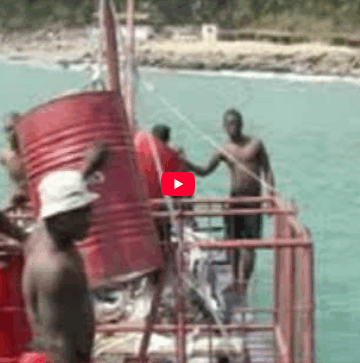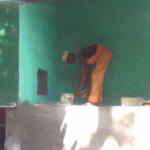The inventor filed international patent applications in both the U.S. and the U.K.. The current design is an improvement of a 1998 patent issued in the U.S. No. 5,808,368. A second U.S. Patent was issued April 26, 2011 -- 7,930,885. The U.K. application is still pending.
The biggest considerations for ocean wave energy devices are capital costs and survivability. Efficiency of capture is far less important, given that the source of the energy is free. Generating the power in the water means inventing entirely new mechanisms which must be maintained in a difficult environment. Generating the power on shore vastly simplifies the maintenance aspects.
DESIGN FEATURES
The first attempt was done on a beach near Puerto Quetzal, Guatemala, 1996
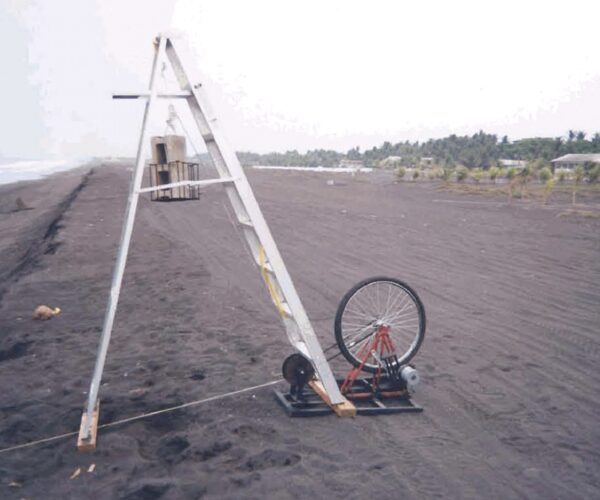
1996
The cable extended about 200 yards into the surf, beyond the beakers, and ran first through a pulley attached to an engine block, and then up to a submerged, upside-down hammock with an inflated truck inner tube serving as a float. The small 24-volt DC motor spun by the bicycle tire would light up two small lights for about 3 seconds with each wave. Eventually the friction of the pulley wore through the cable.
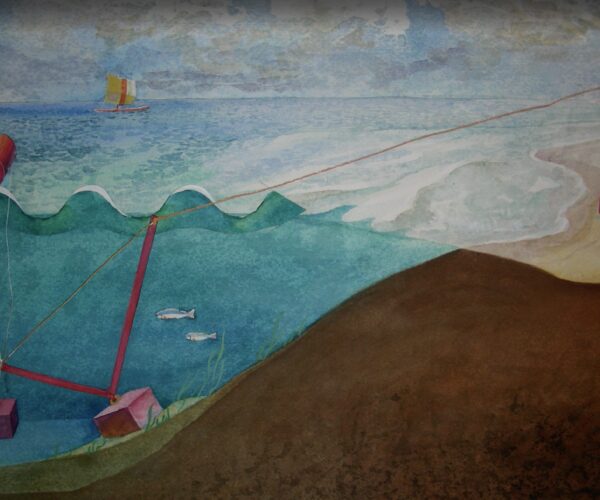
First attempt for both the water and beach portions of the unit in Guinea. See video for explanation. The first water unit was lost in deep water.
The weight below the barrel is heavier than the weight on shore, so that force can be captured onshore regardless of whether the barrel is falling or rising on the waves.
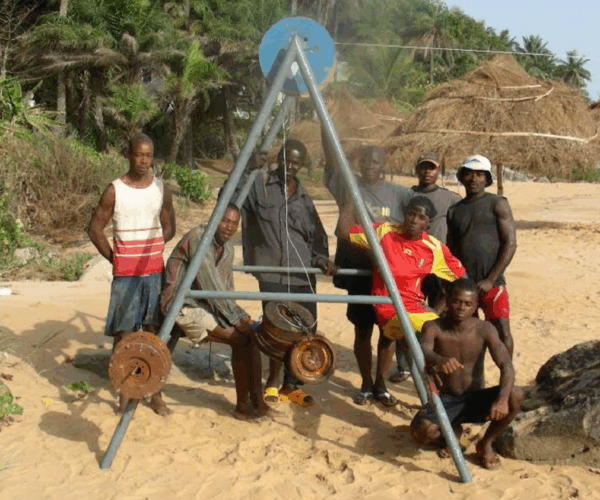
which also succeeded in demonstrating the kinetic forces available on shore
The first demonstration used truck engine flywheels weighing about 50 kilos. The cement weighed about 100 kilos. In each case, in a very calm surf, the weights moved about 2 feet in each direction with each wave.
in March of 2009.
The effort was abandoned after the inventor's narrow escape from serious injury on the rocks shown in the earlier photos
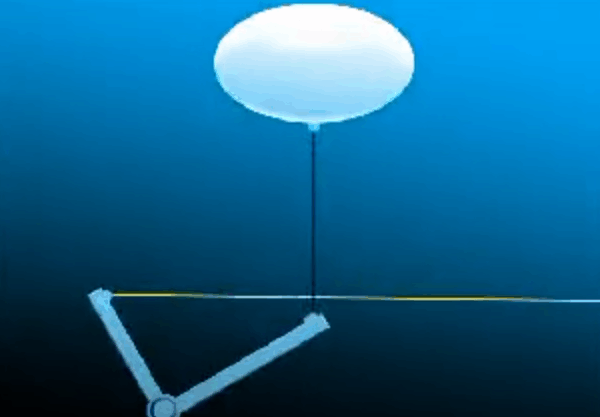
A sealed bearing at the pivot point eliminates the risk of wearing through the cable.
Stainless steel cable with a tension strength of one ton was purchased for a second attempt. Later, the horizontal arm was lengthened to compensate for tidal variations in a way that allows the top of the vertical arm to oscillate through a largely horizontal arc regardless of tide levels. The length of the horizontal arm was the unique aspect of the first US patent.
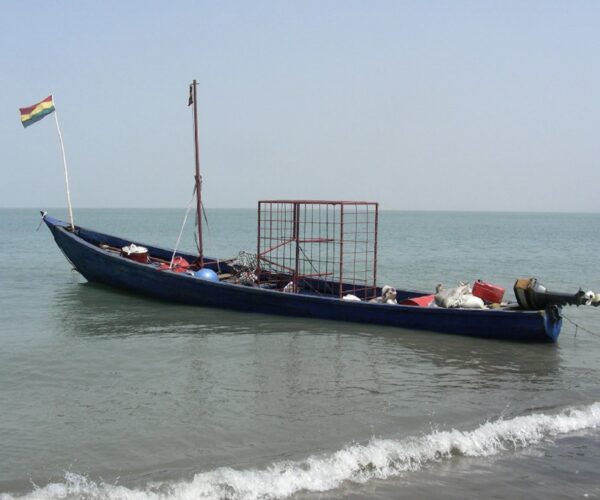
2012
The larger basked was filled with sandbags to provide a stable anchor at the bottom, over which the arm unit (one end is not visible in the picture) would rotate.
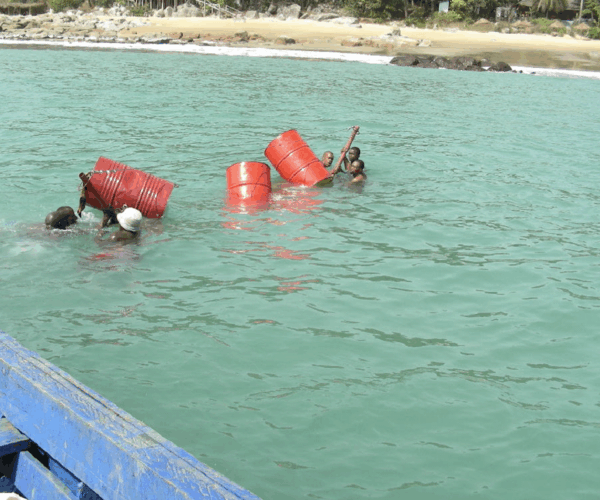
February 2009
A narrow escape from being thrown onto the rocks visible onshore while swimming out to examine the water unit during high surf caused the inventor to abandon the effort
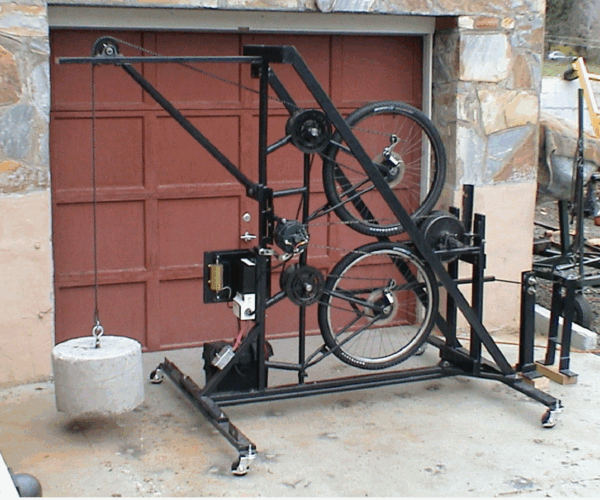
in 2008
A separate test device to move the weight up and down was constructed and used in Virginia. The bobbing of the weight every six seconds, about three feet up and down, would fully charge a 100 amp-hour, deep cycle 12-volt battery in about six hours. The unit was installed in a building constructed on shore. The bicycle wheels would spin the motor in the same direction regardless of the direction of the weight.


